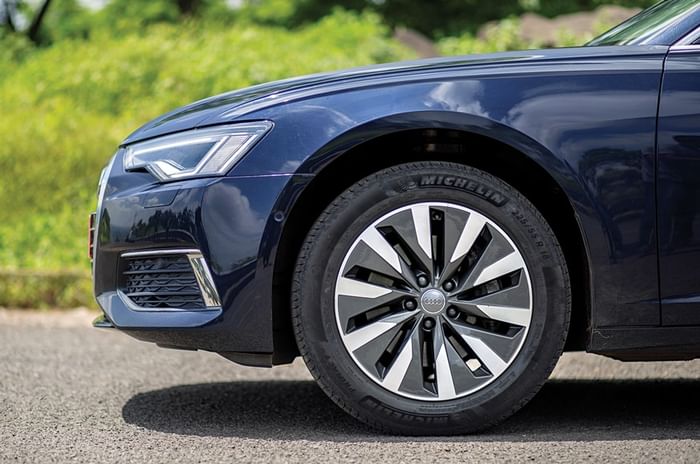EXCLUSIVE!
If you’re thinking you haven’t seen an all-new Audi model launch in a very long time, you’re not alone. Sure, there have been new variants, the odd performance derivative and several special editions, but the last all-new Audi was the Q5, launched in January 2018! The truth is, Audi HQ was busy upgrading its engines in core markets like Europe to meet new emission standards and test procedures (WLTP), and is still battling with the ‘Dieselgate’ scandal. These issues have severely affected the rollout of several new models to various markets, ours included. That’s all about to change though, as we’re about to see a slew of new models headed our way in quick succession from Ingolstadt, starting with this one here – the new A6. And, as you might’ve guessed, it has launched with a petrol engine.
2019 Audi A6 exterior design and engineering – 6/10
Well proportioned, understated design that will age well
The first thing to get out of the way is that the A6 for India is the standard-wheelbase version. Audi won’t do a long-wheelbase version for India as Mercedes did with the E-class, nor does it have another, more spacious model to fill the gap between it and the A8, like the BMW 6 Series GT. The idea is to offer one balanced car that suits both, the driver and the driven. Size-wise, its grown in every dimension and is now 7mm longer, 12mm wider, 2mm taller, with a 12mm longer wheelbase, but, visually, it doesn’t seem much bigger.

First, however, let’s take a look at how the design has evolved. The silhouette has stayed virtually identical, and that’s a good thing. It has an almost-cab-rearward shape, with a long bonnet and
a stretched, curved glasshouse pulled far back, ending in a relatively short boot. Softer, smoother design elements are replaced by sharper, squarer, more in-your-face details. If you thought the new BMW grilles were big, you should get a load of Audi’s latest single-frame ‘Bulgarian Beard’. It’s wider than ever and all chrome, with more of the shiny stuff down in the bumper. The full-LED headlamps are a lot more angular now and feature a new DRL signature instead of the one we’re used to. At the back too, the impression you get is ‘familiar, but more’. The tail-lamps are larger and feature cool, intricate LED detailing, and are joined by a thin chrome strip. You’ll find more chrome in the bumper, including what looks like a pair of dual exhaust tips but are actually just a design element. There are many new creases – several on the bonnet and some on the fenders, while the shoulder crease has now been split in two, to independently accentuate the front and rear wheel arches (a nod to the Ur-quattro rally car of the 1980s).










































